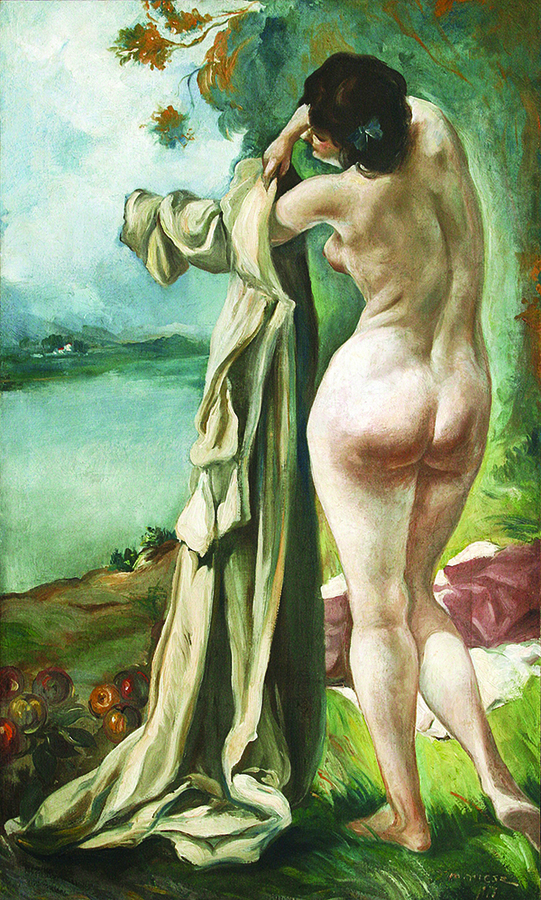 Manuel Mesa Hermida Manuel Mesa Hermida
Period: Early Republic
1895 - 1971
Feminine Nude
Desnudo Femenino, 1917
oil on canvas
41 1/2 x 24 1/2 inches
Manuel Mesa Hermida Pacheco (1895-1971) was born in Cuba, and later as a child moved with his family to Yucatán, México. There, in the Aztec city, he relied on the orientation and sponsorship of the Tarazona brothers, who were both painters. At eighteen years of age, he was sent to study at the San Carlos Academy of Painting, in México City. Afterwards, he graduated from the renowned San Fernando Academy in Madrid, Spain. According to journalist Benjamin de la Vega, “ it was in the motherland that his brush was refined, copying the great Spanish masters during his student years.” This early period includes the oil on canvas Feminine Nude, dated 1917 and exhibited in Important Cuban Artworks, volume three.
His mature work turned toward mural scale paintings of historical themes, creating for posterity notable oils like Cespedes en la Demajagua, displayed at the National Museum of Fine Arts in Havana, and his most famous work, The 1871 Student Massacre, dated 1934, previously on the walls of the Ministry of Education Building. During the republican era, Mesa also depicted popular themes and urban landscapes. His painting Estudio was included in the 1940 exhibit Three Hundred Years of Art in Cuba, in Havana. He became part of Miami’s Cuban exile community in the 1960’s and produced large scale works with marked political content.
Manuel Mesa Hermida died in Miami in 1971. His remains are found in Flagler Memorial Park. The tombstone reads, “Manuel Mesa (1895-1971) Famous Cuban Painter.”
|
